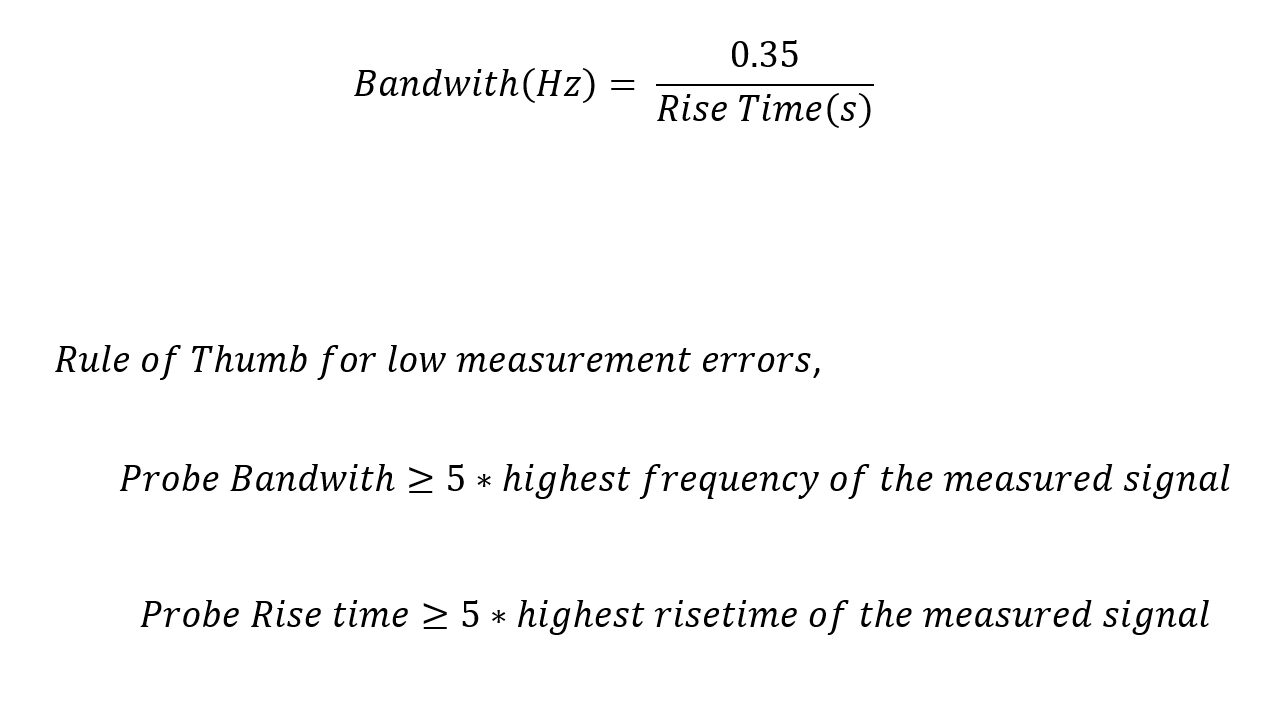
The next important thing to consider when using a probe is its Bandwidth. Fundamentally Bandwidth, from the probe’s perspective, is nothing but the range of frequencies a probe can reliably transport from the circuit being measured to the input of the oscilloscope. It’s defined as the range till the point amplitude of the signal falls to 0.707 times or -3dB from the input. This means that a probe with a BW of let’s say, 50MHz will have the amplitude 3dB lower at 50MHz. This will introduce a 30% measurement error if you are pushing a probe to its end limits. So there is usually a rule of thumb that says when trying to measure a circuit signal with Freq f, use a probe with around 5*f as the bandwidth. This will ensure that the amplitude error is less than 3% as you are way within the spec.

Again, for a square signal, the amount of freq(BW) content is not usually determined by the time period but rather by the rise/fall edges. Bandwith=0.35/RiseTime. So when you are trying to measure a signal with a fast rise time, if the probe BW is not high, the value of the rise time measured will be longer. The same 5 times rule above applies for the rise time case also just to be well within the spec for low measurement error.
You have to always ensure that the probe bandwidth is larger than the oscilloscope input bandwidth. If your scope is limited, even if your probe transports the entire signal, the scope can’t display it without some error. The rule of thumb I use is, Probe BW>=1.5*Scope BW. But do note that some manufacturers underrate the values of probe BW, so you may be able to get away with using a 50MHz probe with 50MHz scope if it’s by the same manufacturer and is matched.
When using the 1x/10x probes do read the probe’s specs carefully, BW is drastically different for 1x and 10x. 10x mode has an order of magnitude higher BW than 1x(Why? That’s a long explanation. Maybe for the future if there is interest). So please do not use them interchangeably when measuring if you don’t know the BW of the signal you are measuring. It’s very easy to screw up on this point.
0 Comments
Comments are closed.